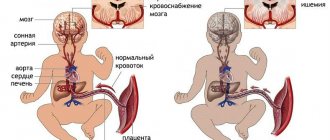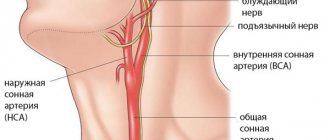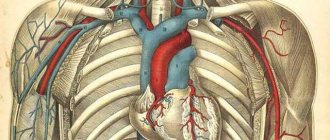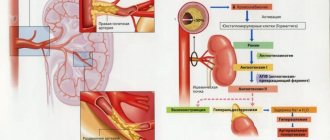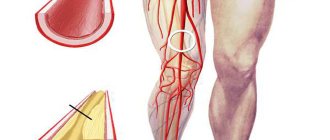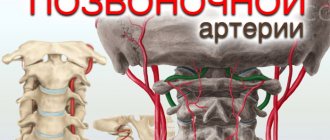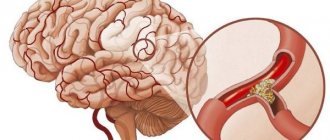Reproductive medicine is considered a sensitive issue, because we are talking about an important issue in women's health. Often, it is in the ability to bear a fruit and give birth to a healthy baby that a woman’s happiness lies.
The specialists dealing with this issue are great professionals; the normal functioning of the reproductive organs in the future depends on their qualifications and experience.
The body's reproductive system often suffers from inflammatory processes, which can be extensive. The percentage of occurrence of various neoplasms, not always benign, is growing.
It is noted that uterine fibroids are considered a common disease, which is successfully combated using uterine artery embolization.
What are uterine fibroids?
This diagnosis means the presence of a benign nodular neoplasm, which is localized in the muscle tissue of the uterus.
The size of the pathology can be minimal or reach several centimeters in diameter.
It is noted that the node consists of smooth muscle fibers and is distinguished by its irregular structure.
The main sign that a woman may have fibroids is the occurrence of uterine bleeding. An unpleasant pressure is felt in the lower abdomen, which turns into severe pain.
Sometimes, women with a history of fibroids cannot conceive or carry a child. In some cases, problems arise with the functioning of the bladder.
Recently, uterine fibroids have been considered a very common diagnosis, and they are found not only in women over 40 years of age. According to statistics, every second woman aged 17 to 46 years is diagnosed with this disease.
Preparation for surgical treatment for uterine fibroids
Before UAE, the patient must be examined by a gynecologist and therapist, have an ECG, and undergo blood and urine tests. A complete list can be obtained from your healthcare provider. At the same time, two specific studies can be carried out immediately before the operation:
Ultrasound and Doppler of nodes: implications for embolization
An ultrasound examination is performed to assess the number and size of nodes and identify concomitant pathologies. Based on the results of the ultrasound, the question of the possibility of performing UAE or other methods of surgical treatment is decided.
Doppler ultrasound is an important study indicated in all patients before embolization. The technique allows you to evaluate blood flow in the arteries supplying tumor nodes. Uterine fibroids are characterized by:
- Formation of a perifibroid plexus of radial or arcuate vessels;
- Low blood flow velocity in the leading artery of the node - from 0.12 to 0.25 cm3/s.
On ultrasound, uterine fibroids appear as clearly defined formations of varying diameters.
Under the guise of fibroids in women, especially during menopause, a malignant tumor - sarcoma of the uterus - can be hidden. Doppler ultrasound allows one to distinguish one formation from another before the start of surgical treatment. With sarcoma, there is a high blood flow rate of the feeding artery and the appearance of heterogeneous echo structures in the uterine cavity.
In case of a diagnostic error, UAE will not have a fatal effect on the woman’s health. After the operation, the uterine sarcoma will decrease somewhat in size, but after some time it will begin to grow again. This sign is an additional diagnostic criterion and can be used in cases where other methods cannot distinguish a benign tumor from a malignant one.
Separate diagnostic curettage of the uterine cavity (RDU)
The procedure is not mandatory, but may be prescribed in the following situations:
- Continued uterine bleeding;
- Suspicion of other pathological processes in the uterus (hyperplasia, adenomyosis).
In this case, the RDV will allow you to evaluate the full clinical picture before surgery and make the right decision on the further management of the patient.
RDV allows you to obtain cellular material and judge the histological structure of pathological changes in the uterine cavity.
Preparation before surgery:
- Antibacterial drugs (ornidazole) are prescribed 5 days before UAE. After embolization, tissue ischemia is observed, which contributes to the development of anaerobic infection. The use of antibiotics reduces the risk of bacterial complications;
- Immediately 2 hours before surgery, another antibiotic (ceftriaxone) is administered;
- A day before the procedure, a cleansing enema is performed;
- Before manipulation, catheterization of the bladder is performed;
- According to indications, sedatives may be prescribed;
- If a woman is taking medications that affect blood clotting, she should inform her doctor;
- On the day of the operation, it is forbidden to eat or drink;
- During the procedure, the woman's legs should be wrapped with elastic bandages. You can wear compression tights to prevent thromboembolic complications.
Important
UAE can be performed on any day of the cycle, but more often in the first phase. It is not recommended to perform the procedure during menstruation.
What is the uterine artery embolization method?
The abbreviation UAE means a low-traumatic surgical technique that allows you to cut off the nutrition to myoma nodes.
Arterial embolization occurs when arteries are blocked artificially. After such medical manipulation, “drying” of the nodular neoplasm occurs.
Recently, the popularity of this technique in Russian clinics has been noted. This is facilitated by the more frequent diagnosis of fibroids in women of childbearing age.
Unfortunately, due to a lack of information, the procedure is gradually becoming overgrown with rumors, most of which are not entirely believable.
Gradually, patients are divided in opinion, some of them place their hopes on UAE and consider this procedure one of the most effective in the treatment of fibroids. But there are also pessimists who consider the hype around embolization far-fetched.
UAE is not suitable for all patients due to some limitations; therefore, medical manipulation also has its drawbacks. Although, despite a number of contraindications, it has many more advantages.
Experts believe that today uterine artery embolization is the highest quality alternative to surgery. Moreover, after UAE, women retain their reproductive organs, and their reproductive function is almost unaffected.
What is EMA? The essence of the method
In medicine, embolization of the uterine arteries is understood as a low-traumatic intervention through which circulatory disturbances occur in the neoplasm. As a result of the influence on the blood vessels feeding the tumor, its tissues die
Emobolization is used when classical surgery is powerless or life-threatening for the patient.
The essence of the procedure is to block the vessels feeding the fibroid with artificially created emboli. When they enter the uterine blood supply, they are transported from the wide uterine arteries to narrow branches. Most of them become clogged within a few minutes after the drug is administered. A few weeks after embolization of the arteries, artificial emboli become overgrown with fibrin fibers and platelet mass, and form an insurmountable obstacle to the blood. The arteries gradually collapse, and the tumor deprived of nutrition is gradually replaced by connective tissue.
Since the uterine arteries are the main source of nutrients for fibroids, the UAE technique makes it possible to achieve 100% efficiency with minimal trauma to the organ. Dead tumors that bulge into the uterine cavity are pushed through the endometrial layer after several cycles and come out along with menstrual flow.
Advantages of uterine artery embolization before surgery
Minimally invasive interventions allow doctors to cope with problems of the abdominal organs with minimal losses. The UAE method is characterized by maximum organ preservation, that is, it does not injure the main organ of the reproductive system in women at all.
Its features:
- it is performed without a single incision, therefore it does not require long-term recovery, rehabilitation and lifestyle changes, and after surgery, at least 3 months of sexual rest, taking hormonal medications, following a diet and switching to “light work” for a year are required;
- acts locally - in the process of eliminating fibroids by embolization of the uterine vessels, nearby organs and tissues are not affected, the likelihood of the formation of adhesions is zero, while after surgery, adhesions bother 70% of women;
- rapid restoration of the functionality of the reproductive system - the recovery period lasts no more than 2 weeks, and after the operation it is delayed for at least 2 months;
- preservation of reproductive functions - no scars remain on the uterus, so the patient, after intervention using the UAE method, can conceive, bear and give birth to a baby on her own;
- minimal risk of relapse - the tumor dies entirely and is rejected by the body, and after excision of the fibroids, living tumor cells may remain in the tissues and continue to grow.
All of these are the main advantages of the procedure over classical surgery.
Embolization for uterine fibroids
Embolization of fibroid vessels is becoming the most commonly used procedure in gynecology. It was first introduced in Moscow, and then began to be used everywhere in the regions. In addition to the previously listed advantages that play a role for the patient and the doctor, it has other benefits for healthcare and society as a whole.
Gynecologists provide statistics on the consequences of operating and not operating on fibroids. According to her, only embolization made it possible to eliminate the problem as painlessly as possible, preserving reproductive functions in full. This procedure does not have any negative consequences characteristic of surgical abdominal interventions: the ligaments that hold the uterus in the abdominal cavity are not injured, so that with age there are no problems with prolapse or prolapse of organs.
When is the EMA method used?
Cases when it is necessary to use EMA:
- If a woman requires pregnancy in the future. Since there are too few methods to preserve reproductive function, doctors prescribe UAE.
- Provided that myomatous neoplasms do not reach the volume of pregnancy at 12 weeks.
- When there are concomitant diseases such as adenomyosis or endometriosis.
- If the disease recurs, if after a previous removal, the fibroid begins to grow again.
- Rapid growth of the tumor occurred.
- Severe bleeding after labor.
- When the patient has personal contraindications to anesthesia or radical surgery.
Who conducts EMA?
Embolization of the uterine arteries is possible only in large clinical centers. There, competent surgeons who have undergone additional training will be able to solve a delicate problem. It is important to understand that a completely new service is in great demand, which means that you will have to wait in line to receive help.
As practice shows, in the capital’s clinics there are no problems with medical personnel and equipment. Therefore, it is better to go there for surgery to treat uterine fibroids.
Safety of embolization
With UAE, all risks of complications or emergency situations are reduced. A competent specialist will tell the patient what to expect and how to behave to prevent the development of possible pathologies. During the operation, the doctor will not have to make any incisions, and there will be no blood loss. There is no harm or threat to the life and health of a woman.
Preparation
Before the operation, the patient’s diagnosis must be clarified; once the presence of myomatous nodular neoplasms is confirmed, the preparatory stage begins.
The doctor determines the location of the pathological process, the nature of the tumor and identifies the possible presence of pathologies. Only after this is treatment prescribed.
The patient must have the results of the study, laboratory tests in hand, and undergo an examination in a gynecological chair using special instruments.
All measures are needed to collect anamnesis and clarify the patient’s condition.
Since embolization is performed on the same day, the patient should come to the clinic on an empty stomach. Hair should be completely removed from the thigh and groin area.
EMA forecast. What to expect from the operation?
Immediately after the UAE procedure, the patient is given the following recommendations:
- consume more fluids;
- exclude visiting saunas, baths, and taking hot baths for up to 2 months after the procedure;
- sexual rest for at least 1 month (until the bleeding disappears completely);
- give up physical activity for 1 month.
The woman is examined by a doctor after 3, then after 6 and 12 months. The results of embolization become noticeable gradually, a year after the operation it is stated:
- reduction of myomatous nodes by half of the original values;
- the uterus becomes several times smaller in volume;
- symptoms accompanying fibroids disappear in almost 100% of cases;
- myomatous nodes of submucosal and isthmus location expulse (appear in the uterine cavity);
- the menstrual cycle in women under 45 years of age returns to physiological norm;
- relapse of the disease is possible in only 2% of cases.
If a woman is of reproductive age and is planning a pregnancy in the future, then she can start planning offspring already 3-6 months after UAE, this is possible provided that the menstrual cycle is completely reconstructed and in the absence of complications after embolization.
Methodology
The operation is prescribed on any day of the cycle, except for those days when menstruation occurs. Before UAE you should not eat or drink, your stomach should be empty. After the patient takes the medications prescribed by the specialist, she is sent to the operating unit.
Stages of uterine artery embolization:
- Vascular puncture. Usually the main femoral artery is taken for this purpose. The doctor sanitizes the intended puncture site with a special antiseptic, after which the introducer is inserted. This is a kind of “sleeve” made of polymer, quite elastic, allowing you to protect the arterial walls from damage.
- Angiogram. Next, a catheter is inserted into the cavity of the “sleeve”, through which contrast agents begin to flow. All manipulations are controlled by an X-ray device, which will allow timely detection of an abnormal vascular area.
- Receipt of emboli. The catheter will continue its movement to the main uterine artery, where the blockers will be applied. Substances will begin to flow into the cavity until their reverse outflow occurs.
- The actions will be duplicated with the second artery.
- After everything is done, the doctor slowly removes the catheter and auxiliary instruments. Next, a pressure bandage is applied to the operation site.
A competent specialist, even in a very complex case, should not spend more than an hour on the operation. Most often, 30 minutes is enough, but here everything depends on the characteristics of the patient, the size of the tumor and the qualifications of the doctor.
At first, the woman will be given anti-inflammatory drugs and pain blockers. Provided there is no bleeding, the fixing bandage is removed the next day.
Sometimes, after UAE, patients experience expulsion, that is, tumor formation. According to the medical community, this is a normal situation, and a competent gynecologist will help resolve the problem.
How is the operation performed?
The entire procedure takes from 30 minutes to 1.5 hours. It is carried out either in an operating room, which is equipped with the necessary equipment, or in an X-ray room.
The steps of the procedure are as follows:
- Local anesthesia. If the patient wishes or as prescribed by the doctor, epidural anesthesia can be used.
- Insertion of a catheter into the cubital vein.
- Treating the future puncture site with antiseptics.
- Insertion of a catheter into the femoral artery. A probe is inserted through a small incision.
- Injection of a contrast agent so that the vessels are visible on X-ray equipment.
- After the catheter penetrates the vessels that provide nutrition to the tumor, the embolic substance itself is injected directly - as a rule, these are balls. This procedure is carried out with all existing myomatous nodes. The injected balls cause blockage of the arteries, as a result of which the blood flow through them stops.
- Angiography is performed to confirm that the blood supply to the tumor has been cut off.
- The catheter is removed, and a pressure bandage is applied to the puncture site for a day.
- The patient is transferred to the ward, as she will need complete rest and medical supervision for the next 12 hours.
Result
After the blocking drug has been introduced, partial destruction of nodular neoplasms can be noted. Fibers of the myomatous type change into connective tissue.
After 12 months, the patient’s uterus reaches normal size without signs of pathological changes. After a couple of years, a woman can give birth to a healthy baby.
When performing UAE, the patient will not have any complications that may arise after hormonal therapy or radical surgery. Moreover, there are no uterine pathologies; their occurrence can only be due to the individual characteristics of the patients.
According to experts, uterine artery embolization has 3 main advantages:
- high therapeutic effect;
- low invasiveness;
- there is no need to administer full anesthesia.
Angiograms before and after uterine artery embolization
Recovery after UAE surgery and recommendations for patients – can there be complications?
The patient needs rest for the first 8 hours after the procedure. The bandaged leg must be kept in a horizontal position, and an ice pack is applied to the site of manipulation for the first couple of hours. This helps reduce swelling and relieve pain.
The patient should wear compression garments on her legs for the first few days.
If there are no exacerbations, you are allowed to go home after 1-3 days. Before leaving the hospital, the doctor performs an ultrasound examination.
After embolization of the uterine arteries, the following phenomena may be of concern:
- Slight increase in body temperature.
- Prostration.
- Pain in the lower abdomen. To eliminate them, painkillers are prescribed.
- Nausea.
- Vomit. This post-embolization syndrome is relieved with antiemetic therapy.
- Bloody vaginal discharge. The menstrual cycle is completely normalized within 3 months after UAE.
Such phenomena can occur from several days to several weeks.
Within a month after this procedure, patients are prohibited from:
- Visit saunas, as well as stay in direct sunlight for a long time.
- Undergo any physical procedures in the uterine area.
- Engage in active sports.
- Take baths.
- Have vaginal sex.
Side effects with this procedure are extremely rare, but they do occur.
These include:
- The appearance of a hematoma in the area of the artery puncture. No therapeutic measures are required to eliminate it - it resolves on its own.
- Migration of the node into the peritoneum or uterus.
- Embolization of nearby organs as a result of emboli entering the blood vessels that supply them. A similar condition can develop against the background of individual anatomical features.
- Inflammatory processes in the uterus, accumulation of purulent masses in its cavity. These negative conditions can occur with extensive death of myometrial cells. In this case, the uterus is removed urgently.
- Vaginal dryness, lack of sexual desire. Occurs when the cervicovaginal vessels are blocked.
Possible complications after UAE
Despite the fact that during the operation there is minimal trauma, and there is no bleeding at all, a number of disadvantages and complications still remain:
- the appearance of a hematoma in the area where the catheter is installed;
- discomfort due to nausea and vomiting;
- hyperthermic reaction;
- pain in the area of the uterus;
- possible occurrence of peritonitis;
- infection getting inside;
- subsequent problems with uterine circulation;
- due to the formation of adhesions, necrosis of the adjacent tissue is noted;
- pulmonary arterial thromboembolism.
Don’t be alarmed right away, as these complications are rare rather than the norm. Therefore, UAE is gaining great popularity in the gynecological field.
Some patients reported that after embolization was performed, discharge during menstruation became scanty. Some of those who applied experienced early menopause.
The exact effect of UAE on female reproductive function has not been fully studied due to the novelty of the procedure. But in most cases, conception occurs without visible problems, but pregnancy does not always end successfully.
There are complaints that there is a high probability of miscarriage or pathology in the fetus. Therefore, these patients require a lot of attention from medical personnel.
Risk of fibroid recurrence
According to official data, once embolization is performed, the recurrence of fibroids is almost impossible. Moreover, myomatous nodular formations can still arise if UAE was not completed completely.
For example, during an operation, the surgeon was unable to block access to two arteries due to individual characteristics or the specifics of catheterization.
There is no need to be afraid, since in most cases the catheter installation takes place without errors. Usually, the physician sees in advance the impossibility of the instrument’s passage through the vessels and chooses an alternative method for relieving the problem.
Fertility
The medical community has no direct evidence that embolization causes problems with conception or pregnancy.
They may be present, but it is difficult to answer whether this is due to UAE or the presence of pathologies.
No large-scale testing has been carried out in this area. Often after UAE, pregnancy occurs quickly and proceeds without any complications.
As practice shows, if a woman plans to give birth to a child in the future, and there is an alternative to embolization, then they choose a different technique.
We are talking about therapy that will preserve the organs responsible for the reproductive component. For example, hormone therapy, which will allow the patient to fully recover after taking the capsules.
Complications
After the procedure, a woman may experience the following complications::
- Hematoma in the area of the femoral artery - resolves on its own or with the help of special ointments.
- Infection can be treated with antibacterial drugs. A temperature that does not decrease for several days after the procedure is a serious reason to consult a doctor.
- Pain in the uterine area is relieved with analgesics. In fact, this is a normal phenomenon associated with the death of tumor cells, which, like ordinary cells of the body, have contact with nerve endings.
- Intoxication processes are eliminated with anti-inflammatory drugs. This phenomenon indicates the body’s reaction to the contrast agent and directly to the embolization drug.
- The appearance of adhesions is a rare complication that occurs in no more than 4% of cases.
- Absence of menstruation - the cycle will recover on its own after some time.
- Ovarian depletion is observed in 12-14% of cases.
Recovery after the procedure
A couple of weeks after the UAE, the patient’s body regains its strength. It is not necessary to spend these 14 days in a hospital setting. If the patient feels well, she is allowed to go home the very next day after the operation.
Postoperative period:
- For the next 7 days, you should stick to bed rest and not overload yourself with physical work.
- Try not to skip taking medications that relieve pain. Moreover, analgesics not only help to relieve the inflammatory process, but also resist an increase in overall body temperature.
- If inflammation is severe, you will need to take a course of anti-inflammatory drugs.
To ensure that the operation is not carried out in vain and ends in success, the patient should follow the recommendations:
- In the first week after discharge, increase the volume of fluid absorbed. The patient should drink enough water to recover faster.
- Stop taking medications that affect the composition of the blood and thin it . Such medications include Aspirin and drugs similar in effect to it.
- It is forbidden to take a steam bath, visit a sauna or bathhouse , or sit or lie in the bath for a long time. Several days after UAE, hot steam contributes to the development of complications.
- Patients need to rest for the next few weeks. Also, you will have to abstain from sexual intercourse.
- Gynecologists do not approve of the use of sanitary tampons. After embolization for several months, you should completely forget about them, only pads without various flavors.
How is uterine fibroid embolization performed?
At the preparation stage, patients are prescribed to undergo an ultrasound examination of the pelvic organs. Cervical mucus is also collected. This is necessary to exclude the possibility of oncological tumors and inflammatory processes in the pelvic organs, for which this method is not recommended. Next, through a puncture in the inguinal fold, as with any angioplasty procedure, a catheter tube is inserted into the femoral artery. This procedure is not too painful, and therefore is performed under local anesthesia. After this, the doctor, monitoring the insertion process using x-rays, inserts a catheter into the uterine artery where it begins to branch, supplying blood to the fibroid nodes.
To confirm the correct location of the catheter, as well as to confirm fibroids, an arteriogram is performed - a contrast agent is injected into the catheter, visible under x-ray. If everything is done correctly, the surgeon begins injecting small particles of gelatin sponge or plastic preparations such as polyvinyl alcohol or polyurethane foam through the catheter into the artery. When these particles enter narrow vessels, they clog them, as a result of which blood does not enter the tumor tissue. To completely block the fibroids, a similar procedure is performed in both femoral arteries. Then another control arteriogram is performed to completely exclude the possibility of blood supply to the neoplasm. A sterile bandage is applied to the puncture sites for 12 hours, after which the embolization of uterine fibroids is considered complete.
Video: 3D animation of the embolization process
Recovery after the procedure
Full recovery after this procedure takes about two weeks. However, hospital stay during this period is not required - many women leave the clinic right on the day of surgery. Among the features of patient care during the rehabilitation period, it is necessary to adhere to bed rest for 6-7 days, take painkillers to avoid pain and control body temperature to monitor a possible inflammatory process. In this case, the doctor may also prescribe anti-inflammatory drugs. For successful rehabilitation after endovascular embolization, experts recommend that patients adhere to the following rules:
- Increase fluid intake in the first week after the blockage;
- Avoid taking aspirin and other blood thinning drugs;
- Avoid taking a bath and visiting a bathhouse or sauna for several days after the procedure;
- Patients are given complete physical and sexual rest for several weeks;
- You should stop using hygienic tampons in the first 3 months after embolization.
Video: report from the operating room of the perinatal center
Pros and cons of EMA
No method can be exclusively positive; everywhere there are shortcomings. For example, the main disadvantage of treatment can be considered its high cost, because not everyone can afford to allocate such an amount.
Also, high-quality equipment can only be found in a few treatment centers. Of course, in the capital region there will be no problem with this; all medical innovations will immediately arrive there. But in the outback or regional centers there is unlikely to be a similar service.
Due to the novelty of the operation, few specialists have yet been trained to perform the treatment. Without specific training, it will be difficult for a Russian physician to perform UAE without errors.
UAE also has another significant drawback: exposure to X-rays during manipulation. During the surgical procedure, control is carried out, in which the patient is exposed to X-ray influence. It is worth noting that the equipment has modern parameters, the dosage is incredibly small and will not exceed the indicators that arise during fluorography.
For many, it is unpleasant that tissue sampling for biopsy during embolization is impossible. But angiographic diagnostics makes it possible to smooth out this fact a little.
EMA advantages:
- Low invasiveness and high safety of the technique ; doctors do not need to administer full anesthesia.
- The risk of relapse is reduced to a minimum. For example, after myomectomy, half of the patients again develop nodules in the pelvis.
- Instant results. Positive dynamics are observed within an hour after embolization of the uterine arteries is performed.
- Short period of hospital stay. After a day, the patient can be sent home, since if tolerated well, there is no need to stay in the hospital.
- Provided that the patient was treated by a highly qualified specialist, complications should not arise. Compared to other types of surgical interventions, this technique is the safest.
- The undoubted advantage is that all reproductive organs remain in place. Moreover, reproductive function is not affected and a woman can easily become pregnant within a year and prepare for childbirth.
There are restrictions due to the size of the fibroid, for example, if it reaches a size of 5 weeks, embolization will not be possible. The vessels will not be wide enough, and the catheter will not be in the right place.
UAE and pregnancy
After embolization, a woman can easily carry and hope for the birth of a healthy child.
When radical methods were used, she was deprived of this chance. Doctors believe that UAE has become a salvation for young patients who previously did not have time to have offspring.
Arterial embolization preserves the ability to procreate. Therefore, when diagnosing fibroids, competent doctors consider this manipulation to be preferable to hysterectomy and myomectomy.
Moreover, when removing myomatous nodes, there is a risk of the appearance of adhesions, which are localized both in the body of the uterus and on the organ itself. As a result, the patient develops infertility, which is no longer treatable.
It is important to understand that even a high-quality operation will not protect the patient from the fact that the pregnancy can be terminated at any stage. Despite the complete restoration of reproductive function, problems with pregnancy may remain. Patients who have had nodes removed should be monitored by a doctor to take all measures to preserve the fetus.
Over the next 12 months after UAE, the nodular formations will gradually shrink, and the uterus will return to normal size. It is dangerous to become pregnant during this period, since the recovery process is unstable, and uterine contractions will occur constantly.
Contraindications to the procedure
Still, even this method has its limitations. Contraindications to embolization are as follows:
- Submucosal fibroid,
- Inflammatory process in the pelvic organs;
- Pregnancy;
- The presence of allergic reactions to medications used for anesthesia.
Complications after endovascular embolization
In general, the risk of complications of any kind after this therapy is very low. On average it is no more than 1%. Complications resulting from embolization of uterine vessels may be the following:
- Disruption of the menstrual cycle for six months after the procedure;
- The occurrence of an inflammatory process during the first few days after administration of the drug;
- With the submucous type of fibroids, new nodes may appear;
- An extremely rare type of complication may be perforation of the uterine arteries.
If complications occur, it is likely that the patient may require surgery to remove the fibroids to complete treatment, but the likelihood is low, accounting for 1 in 1000 procedures.
Opponents of the method
The medical community is divided into 2 camps that are trying to prove their point of view to each other. According to many experts, gynecologists do not want to recognize the benefits of UAE due to the fact that they are not involved in this procedure.
Upon closer examination of the statistics, it becomes clear that most of the surgical procedures in gynecology are carried out in connection with uterine fibroids.
Doctors are accustomed to solving this problem radically by removing the organ completely or, in rare cases, amputating nodules from it. If the community recognizes UAE as the most effective technique, then more than half of the patients will not reach the gynecology hospital.
The negative aspect of uterine artery embolization occurs for another good reason. The procedure requires the latest and very expensive equipment; most clinics do not have it. There are about 20 clinics throughout the country where they can perform high-quality UAE (Moscow, St. Petersburg, Krasnodar, Yekaterinburg, etc.)
Again, if a gynecologist writes a referral to one of the leading centers during a consultation, he will automatically lose most of his patients. It’s unfortunate, but commerce rules everywhere, and even some doctors are looking for profit in their decisions.
In other countries there is a legal liability for concealing information from patients, but this practice has not yet reached us. A major publication published an article about women with uterine fibroids in the States. 89% changed their doctor only because he did not give them information about UAE.
Price of uterine embolization in Russian clinics
The cost of the manipulation in question will be determined by several factors:
- The status of the medical institution. The amount for such an operation in public clinics is often lower than in private ones.
- Experience and authority of the surgeon.
- The number of tests that the patient needs to undergo. If there are concomitant diseases, the examination will be more extensive, which means more financial resources will be spent.
- A variety of medications that must be taken or punctured before embolization of the uterine artery.
- The volume of dye for angiography.
- Postoperative measures. This includes the number of days spent in hospital; list of instrumental and laboratory examinations; number of consultations with the doctor.
On average, the price for uterine artery embolization in Moscow clinics will be 110,000 rubles.
Rate
—
Cost of the procedure
How much does the procedure cost?
Not everyone is prepared for the fact that this is not a free operation.
Usually the price for services is at least 100,000 rubles , because it also includes the time spent in the hospital after surgery.
Also, the reason for the high cost lies in the use of expensive equipment.
Moreover, medical manipulation is considered new; not many doctors are able to undertake its implementation.
Moreover, with epidural anesthesia, only the latest medications are used to relieve the patient from side effects.
And of course, you should be prepared for the fact that the fibroid will not completely resolve, but will only stop growing. That is, EMA cannot be considered a panacea; in the future, we will have to reinvest in treatment to maintain women’s health.
Safety of embolization
EMA is not a new method, and has been actively used for more than 18 years. The embolization technique is recognized worldwide and hundreds of thousands of procedures are performed annually. Long-term results have been tracked for almost 20 years. Class A evidence has been obtained on the effectiveness and safety of UAE: randomized prospective multicenter studies:
- EMA is FDA approved in the USA.
- EMA was approved by the Ministry of Health of the Russian Federation in 1998, certified as a high-tech method of treating uterine fibroids in 2005.
- In the United States in 2002, there were 250 centers using UAE (UA was performed on US Secretary of State Condoleezza Rise in 2004 - the method was chosen on the basis of the greatest safety and effectiveness).
In 2011, a team of Russian authors, including the head of the department of endovascular surgery of the European Clinic Boris Yuryevich Bobrov, were awarded the Russian Government Prize in the field of science and technology for the introduction of endovascular methods for the treatment of gynecological diseases and, first of all, for the development and implementation of UAE in the treatment of fibroids uterus
+7 (24/7) Expert consultation
Reviews
Feedback on the EMA procedure:
There is no clear answer regarding the advisability of this particular procedure, although the method is minimally invasive. A radical measure is considered the most effective, but it is not suitable for younger women who are afraid of old age and loss of reproductive function.
After a high-quality UAE, ladies recover completely and forget about their diagnosis forever.
Flaws
Emmobilization of the uterine arteries with uterine fibroids has practically no negative sides.
All potential disadvantages of the therapeutic procedure are expressed as follows:
- violation of the integrity of the walls of the hip artery, in which the blood is under high pressure (you may experience pain in the thigh area and a slight discharge of blood 3-5 days after the operation);
- there is a 15% chance of relapse of the disease if some of the tumor cells still received blood supply due to insufficiently dense closure of the artery;
- in the first 30 days after surgery, it is recommended to refrain from having sex so as not to injure the already inflamed tissue of the uterus;
- 7 days after embolization was performed, aching pain is felt in the lower abdomen;
- an increase in temperature, which remains at 37.3-37.7 degrees Celsius, remaining for 4-5 days;
- a disruption in the menstrual cycle cannot be ruled out, caused by a local inflammatory process during the period of disintegration of nodal connections, the cells of which have died without access to blood and are naturally excreted outside the body.
These are the main negative aspects of UAE, which can be classified as disadvantages of the treatment method. The advantages of embolization are an order of magnitude greater, which proves the enormous effectiveness of this method of treating uterine fibroids.


